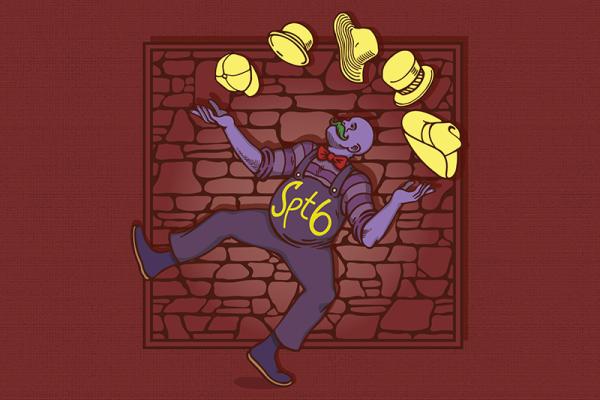
Every human cell carries our genome, roughly 3.5 billion letters - DNA - that assemble into our genetic code. In order for large genomes to fit into the tiny cells, proteins called histones organize and package DNA in cells. DNA wraps around the histones so they can be condensed into the space.
Histones help keep DNA packaged but that also limits the ability to "read" the genetic information inside. Just like you need to open a book to read the pages, that happens with DNA, but that involves temporarily removing the histones so the genetic code can be copied into RNA and the RNA can then be used to create proteins. Then cells destroy the copied RNA "messages" once they are no longer needed.
That process sounds like an accident waiting to happen, as if it was created on an evolutionary dare, and it's true diseases like cancer happen when the ability of cells to either produce or destroy the messages malfunctions. And that is why scientists are intrigued by Spt6.
Spt6 - its crucial job
When a gene is copied into a strand of RNA, the DNA in and around the gene must be loosened from its packaged state and then Spt6 helps DNA become re-wound when the copying process is completed. It also facilitates RNA degradation so that cells have just the right amount of RNA for the creation of proteins. And that may lead to ways to understand disease.
Spt6 binds to RNA Polymerase II, which is the enzyme machine that copies DNA into RNA. Researchers writing in Molecular Cell wanted to determine whether a non-binding version of Spt6 still performed its DNA-histone rewrapping function. Using baker's yeast, baker's yeast, a classic basic science organism because yeast studies can be extended to human cells since the same proteins occur in yeast and humans, they found that it did. But the RNA amounts were extremely high, and these high RNA amounts did not occur because there was more copying with the defective form of Spt6. Many RNAs survived in cells longer than they normally would have, allowing the RNA levels to rise to abnormal levels.
They found that Spt6 interacted with one of the cell's major RNA degradation machineries, the protein complex Ccr4-Not, which is "recruits" during gene expression to ensure the proper balance of enzymes that protect and degrade RNA. The previously unknown, fundamental mechanism of RNA degradation, and the results suggest that defects in the RNA degradation function of Spt6 may underlie some diseases, particularly cancers, which feature uncontrolled cell division.


